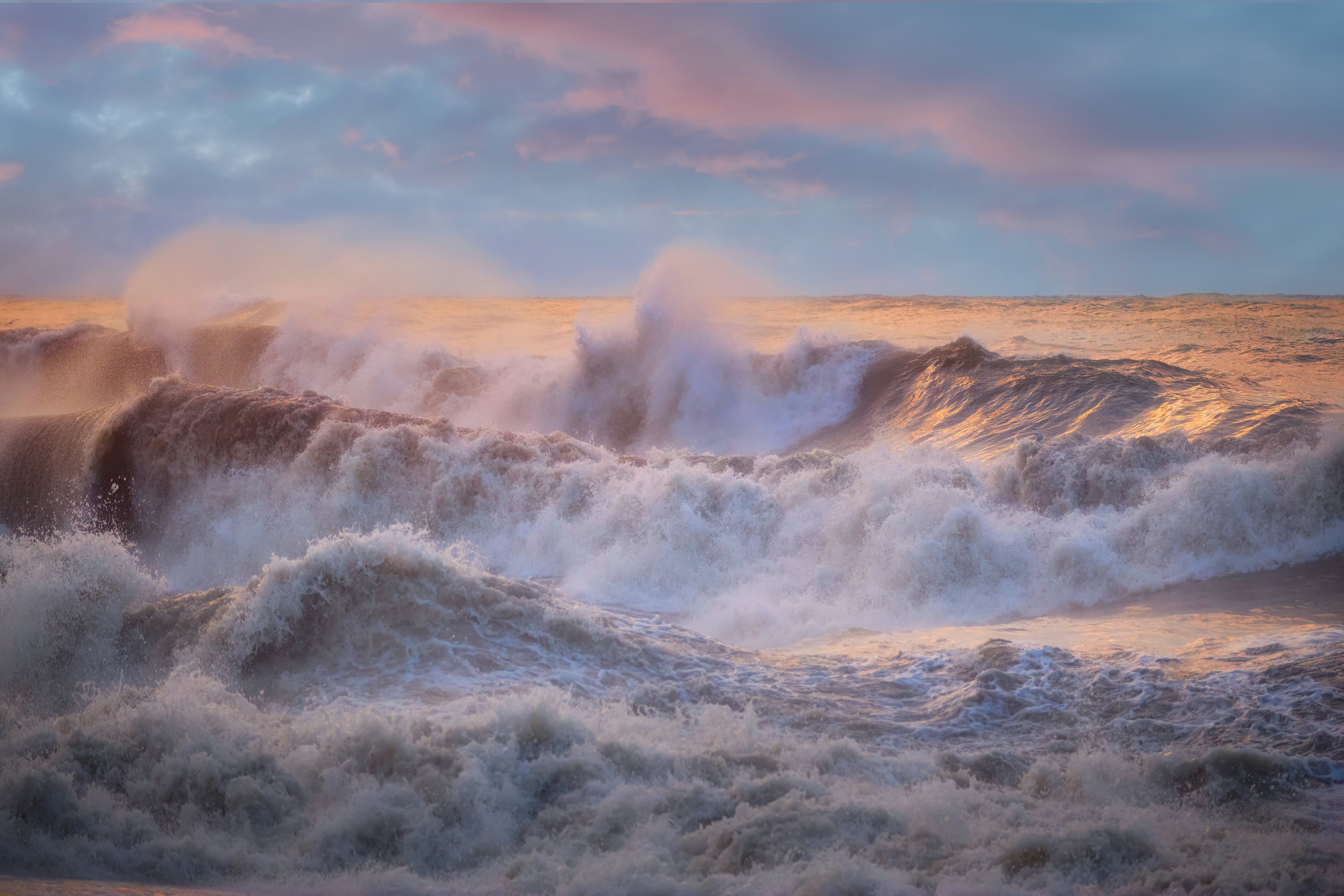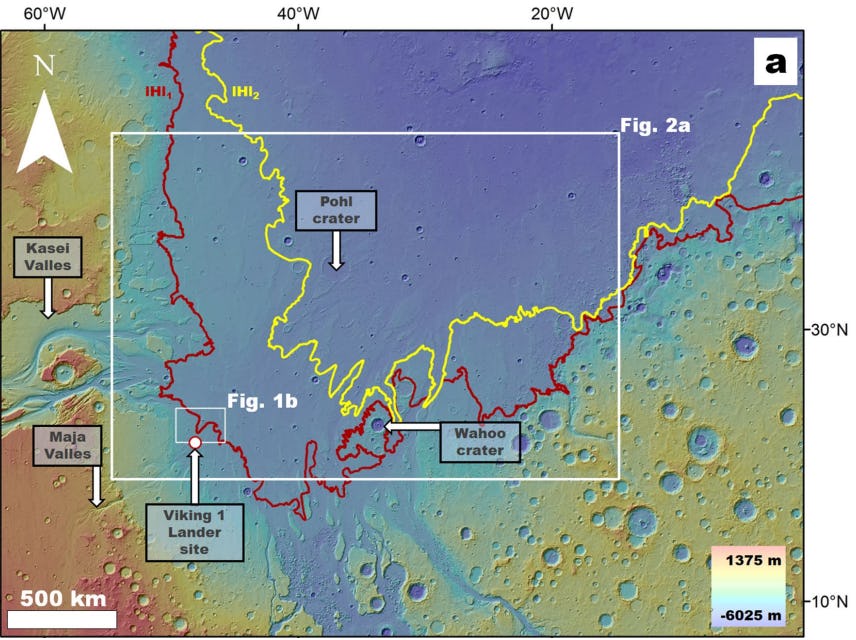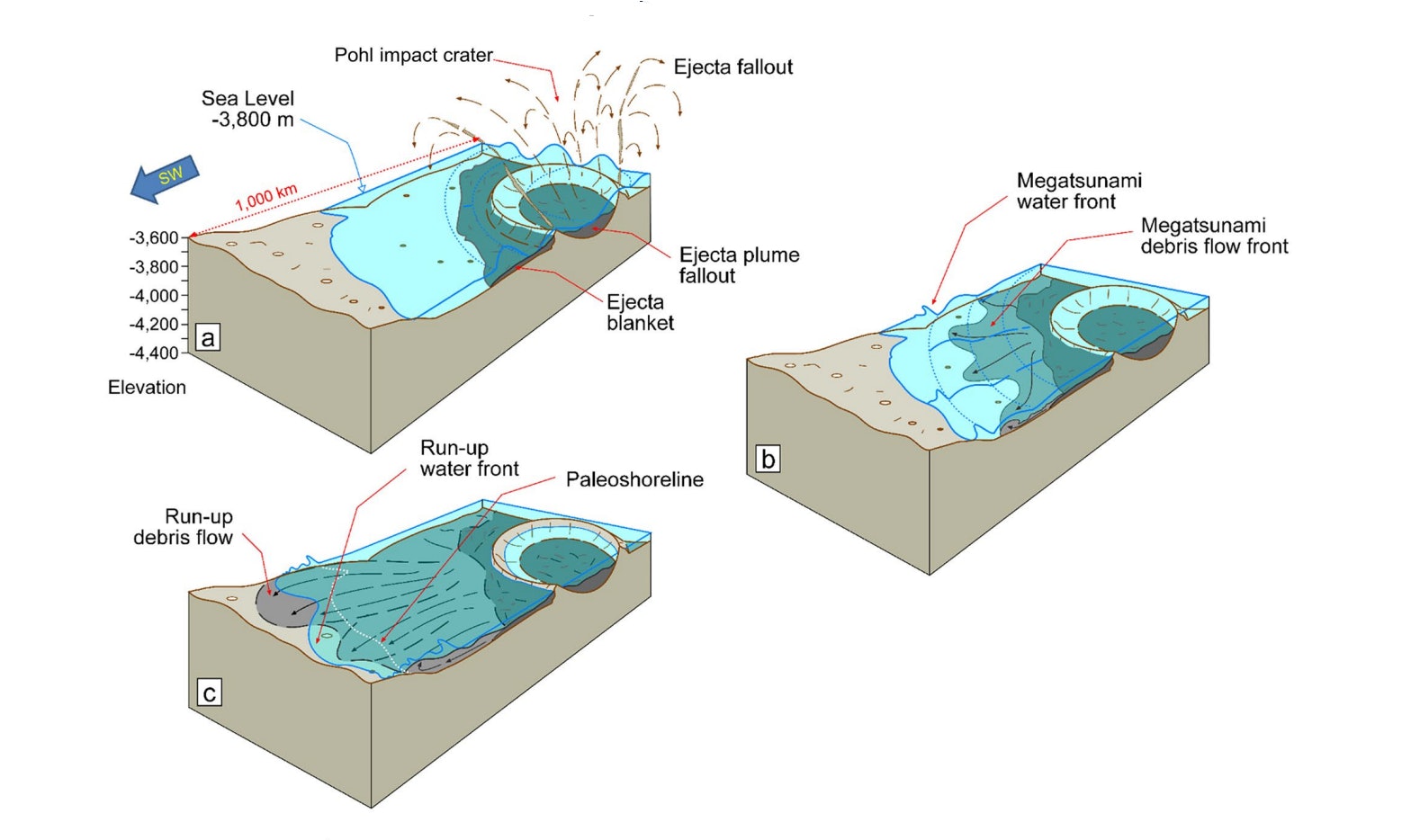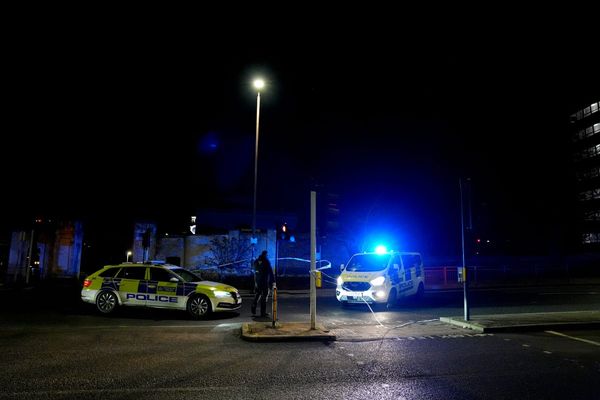
A massive crater on Mars may be all that’s left of an asteroid that slammed into the planet 3.4 billion years ago, triggering a devastating megatsunami.
The 200-meter-tall waves flooded thousands of square kilometers of Martian lowlands, leaving behind rocky debris and deep scour marks in the ground to mark their passing. Now a team of scientists says they’ve found the crater left by the asteroid impact that triggered this ancient cataclysm — and it’s eerily similar to the Chicxulub crater here on Earth.
The researchers published their results in the journal Scientific Reports.
What’s New — According to planetary scientist Alexis Rodriguez of the Planetary Science Institute and his colleagues, the asteroid strike released at least 10 times the destructive energy of the most powerful nuclear bomb ever detonated — and possibly up to 260 times. And much like the asteroid impact that killed the dinosaurs here on Earth, this one crashed into a shallow sea and kicked up a megatsunami that towered more than 200 meters high when it hit land.
Rodriguez and his colleagues searched images from NASA’s Mars Reconnaissance Orbiter and other spacecraft, looking for a crater of the right size and age, and in the right place, to have caused a megatsunami 3.4 billion years ago. Geologists had already reconstructed enough of the history of Mars to know that this part of the planet — an area of low-lying plains in the northern hemisphere, called Chryse Planitia — was once home to a shallow sea, and that at least two megatsunamis had scattered boulders across hundreds of kilometers of the landscape.
“These potential megatsunami deposits have typical widths and lengths reaching several hundred kilometers and exhibit relief gains of a few hundred meters,” wrote Rodriguez and his colleagues in their recent paper.

They found just one crater that fit the bill, but they only needed one.
Pohl Crater is 110 kilometers wide and lies about 900 kilometers north of the Viking 1 lander, which has been slowly weathering at its landing site since 1976. It formed on top of an older layer of rock, which was laid down when even older floods formed the shallow northern sea. And inside the crater, Rodriguez and his colleagues found traces of rocky debris deposited by a slightly more recent megatsunami. That suggested that the crater was about the right age to be linked to the 3.4 billion-year-old cataclysm.
Here’s the Background — The Viking 1 lander landed on a plain covered with rocky rubble several meters thick. NASA chose the site because, from space, the landscape looked a little like the debris left in the wake of a catastrophic megaflood — the sort of thing that happens when the ice dam holding back a glacial lake finally fails, releasing a wall of water downstream.
But from the ground, the area around the Viking 1 landing site didn’t look exactly like geologists thought a landscape should look in the wake of a megaflood; the boulders that the lander’s cameras could see didn’t seem to have been tumbled and smoothed by the water, and there was no sign of islands shaped by its passage. There was just a wide plain of rocky rubble and deep scour marks carved into the ground.
No nearby crater could have spewed out enough debris to account for what Viking 1 saw from its vantage point, and most of the rock wasn’t volcanic, so that ruled out a violent eruption. For decades, it was “an enduring mystery in planetary exploration,” as Rodriguez and his colleagues put it.
Years after Viking 1’s mission ended, planetary scientists mapping the Martian surface realized that the lander had set down near the shore of an ancient, now-dry Martian ocean. And eventually, that led Rodriguez and his colleagues to the conclusion that all that rocky rubble could be the debris left behind by a megatsunami that swept ashore from this shallow sea around 3.4 billion years ago.

Digging into the Details — To ensure they were pointing the finger at the right asteroid impact, Rodriguez and his colleagues turned to computer simulations. They modeled lots of different sizes, angles, and speeds of asteroid and comet impacts to see what kind of collision could have caused the crater – and whether it could also have triggered a megatsunami like the one whose passage is written across the landscape of Chryse Planitia.
They narrowed it down to two possibilities, both of which would have dug a 110-kilometer-wide crater and sent 200-meter-high megatsunamis roaring outward for at least 1,500 kilometers. A 9-kilometer-wide asteroid hitting a stiff, unyielding layer of Martian bedrock would have released 13 million megatons of energy. On the other hand, a 3-kilometer-wide asteroid smashing into a slightly more flexible surface would still have released half a million megatons of energy, which is still 10 times more than the most powerful nuclear bomb ever detonated on Earth.
Their result is chillingly similar to the impact 66 million years ago at Chicxulub, off the Pacific coast of the Yucatan Peninsula here on Earth. The Chicxulub meteor struck in an ocean about 200 meters deep and sent a 200-meter-high megatsunami crashing ashore. Incidentally, it also triggered the mass extinction event that wiped out most of the dinosaurs (geese notwithstanding).
In Rodriguez and his colleagues’ words, “The Chicxulub impact is an Earth analog to Pohl.”







